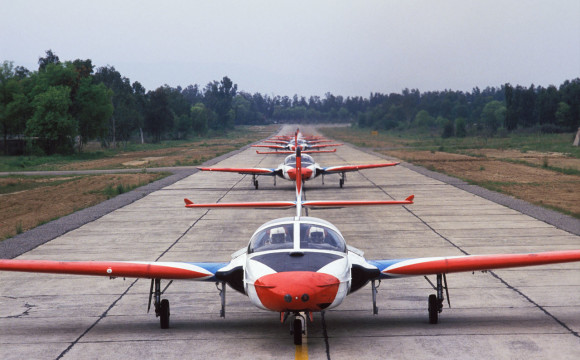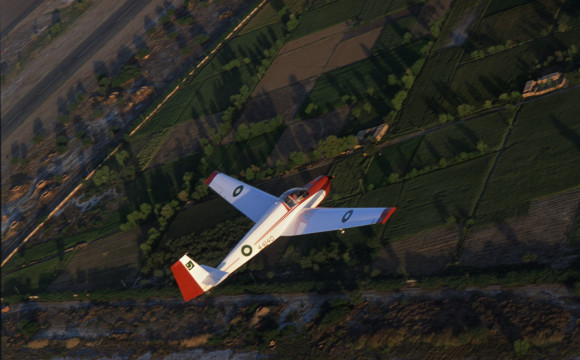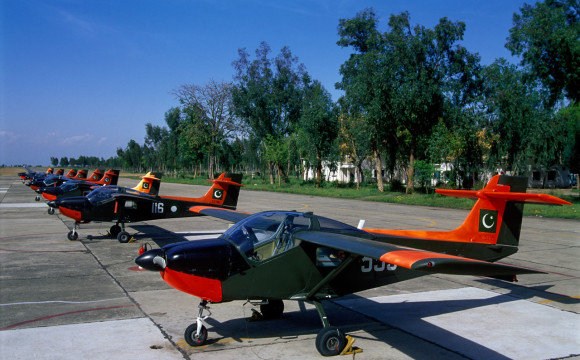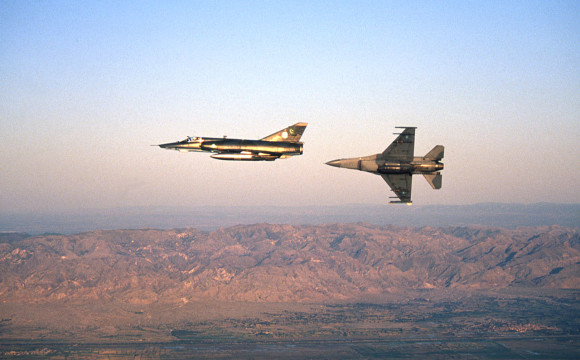I have been fortunate enough to make a living from photography over these past 30 odd years, it has also provided me with, not just remarkable experiences but also truly unique and interesting perspectives on photography, and more importantly on life itself. Though here I plan to talk of photography and related stuff, or at least I hope so.
One of the most thrilling and exciting experiences of my photographic life was when, many moons ago, I was living and working in Pakistan, I was offered the opportunity of photographing fighter planes in flight for the Pakistan Air Force.
I was ecstatic at the prospect of being up close and personal with these monstrous flying machines. I have always had a morbid fascination with these awesome destructive jets that fly faster than the speed of sound and that also wreak so much havoc and destruction, and here I was going to get the opportunity to realize a childhood fantasy of flying one of these amazing machines - or at least get to ride in one.
It started with a trial by fire, to see whether I could endure the aerial acrobatics and the G forces that occur during flight and still be able to take pictures. In the minds of those who apparently knew what they were doing, the best approach was to put me up in a single engine aircraft with a pilot who would put me through a series of crazy aerobatics.
Close to an hour of loops, inverted flying, dead falls, dives, you name it, some how, I came out smiling. I had passed the first test and had completely won everyone over, I had not puked or passed out or for that matter experienced any thing that would be considered detrimental.
Now I was trained in the safety procedures of the aircraft, which was fine by me. I needed to learn how to parachute from the plane, in the case of an emergency. Now, for the adrenaline junkie this would have been an exciting prospect, not so for me, it was time to freak out … I had no desire to jump out of perfectly good aircraft flying a few thousand feet above the ground.
After having the basic rules about parachuting explained and some ground practice in rolling and tips on how not to break your legs, I was put into a C130 along with another 20 or so cadets. 12000 feet later, I was stuck to the door of the plane refusing to jump and grabbing on to dear life, this is when I was unceremoniously pushed out of the plane. I have no clue how to describe the feeling, a strange mixture of almost paralyzing fear, the absolute belief of impending death and the exhilaration of free falling through the air, somehow I survived this experience and also managed to land on the ground safely without any injury. Other than a slightly bruised ego, I was unscathed! The next challenge was to perform a few more of these jumps before I was to be allowed to get into the real machines, the Migs, Mirages and F16’s and a few others. Well, guess what, I did them.
As with any photo-shoot, there are often logistical issues one has to address, and this situation was no different and perhaps posed some of the most serious challenges I’ve ever had to face. Firstly, this is pre-digital days, so there was no second chances or time to review what you shoot. Secondly, the gear that you use, how many camera bodies do you take, how many lenses or for that matter how much film should you carry? Will you have the time to replace the film when you run out of a roll? Will you be able to do it while traveling upside down strapped into your seat? Remember, all you have is 36 exposures - and you want to get as many shots as possible, so you will definitely need to change the film. One of the biggest challenges was the weight of the camera gear when the G forces come into play, something that was 4 or 5lbs, suddenly felt much heavier.
I ended up taking my two trusty Nikon F2’s , with their monstrous motor drives and three lenses, a 24mm, f/2, a 105 mm 1.8 and a 180mm f/2.8 - these camera’s are not light, especially adding in the lenses - and these were before things like auto-stabilization were built into the lenses.
After about a week of flying and shooting, close to a 100 rolls of 35mm slide film were processed. The anticipation and the wait for the film to be processed was another test in patience, though I am happy to say that nearly 85% of the images were good. These images were eventually used in a variety of promotional print materials.
I feel so fortunate that I was given this amazing opportunity - one that not many people get the chance to experience and it’s certainly something that I will cherish for the rest of my life. Even better that I also have some of the photos to remind me of this awesome experience and perhaps re-live a few of the moments in my head!
That reminds me of that time I had to drop down from a helicopter hovering over a battle ship rolling in the high seas, and the time when an F16 pilot flying decided to shoot up in a ninety degree vertical climb with afterburners pulling so many G’s that I completely blacked out - but I’ll save those stories for another time.















